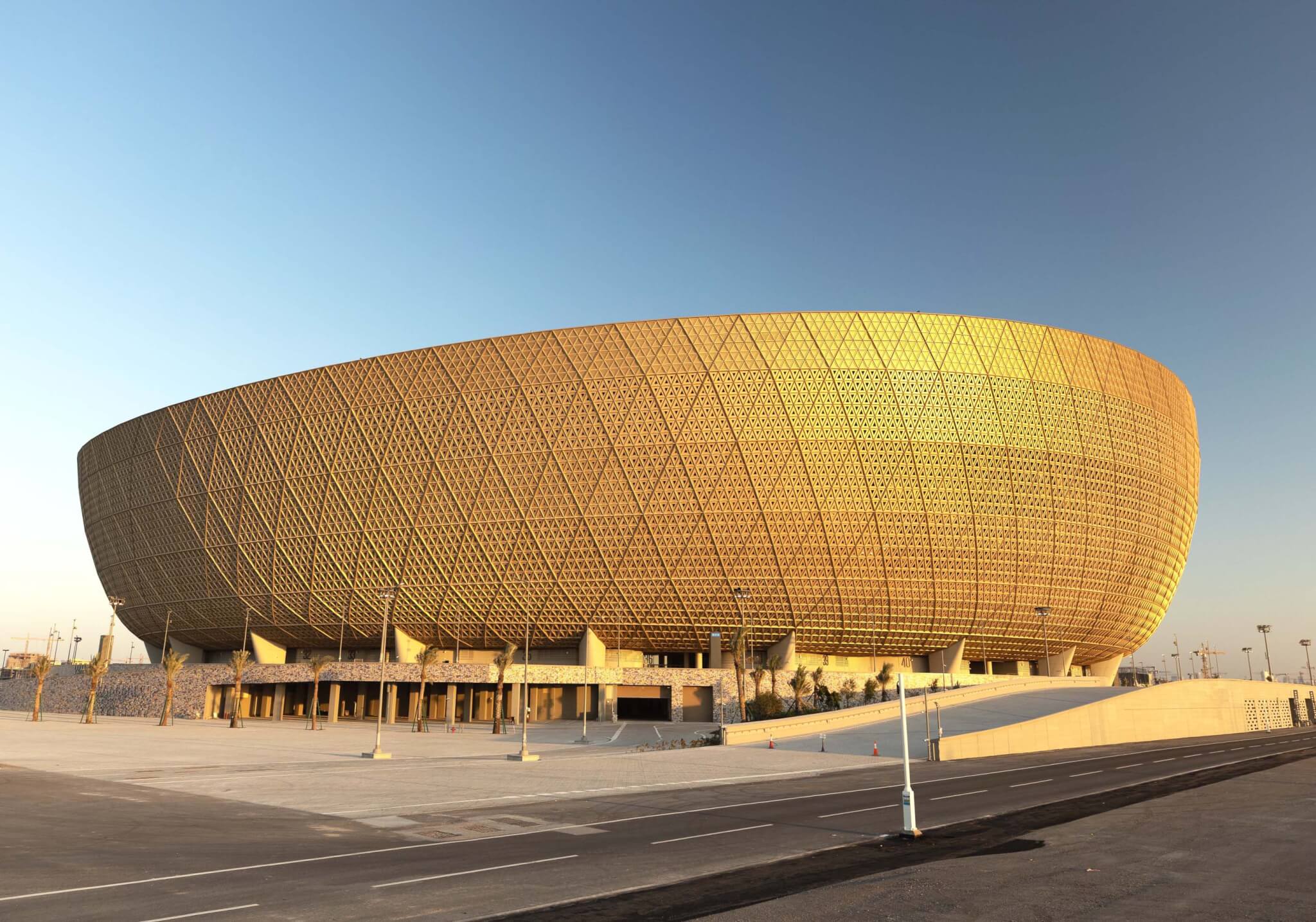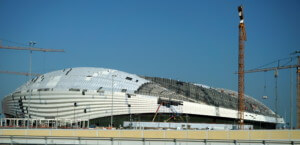The opening of the Jean Nouvel–designed National Museum of Qatar, in Doha, Qatar, marks another step in the country’s mission to set itself apart from its neighbors and solidify its cultural position in the world.
For one to understand the motivations behind the design and construction of the newly opened National Museum, one must first understand a bit about the geopolitical context that it has been built in. Like many of its neighbors in the Persian Gulf region, Qatar has been building at a pace and level of quality that is nearly unmatched in the world. Yet, unlike the United Arab Emirates (UAE), Qatar is not building to attract tourists or even business interests.
Since 1971, when Qatar gained its full independence from the British, it has worked to distinguish itself as a fully autonomous nation. The intensity of this drive has been amplified in the past few years by a series of events and political upheavals that have isolated the small country. In June 2017, Saudi Arabia, the UAE, Bahrain, and Egypt imposed economic and political embargoes on Qatar after years of growing tension over international trade and other international relations. In an act of defiance, Qatar countered by leaving the Gulf Region’s oil cartel, OPEC. These events have led to stronger internal support for Qatar’s ruling emir, who has taken a hard line with the blockading neighbors, and solidified the country’s resolve to stand culturally and economically independent from the region.
The National Museum is designed and programmed specifically to display the country’s unique culture and history to international visitors and, perhaps more importantly, to Qataris. Broadly covering the nation’s natural and political history, exhibitions reach back tens of thousands of years through the discovery of oil and natural gas off the coast in the mid-20th century to explore what it means to be Qatari.
Perhaps ironically though, Qataris only make up around 12 percent of Qatar’s of 2.7 million residents. The rest are foreigners, most of which are migrant service and construction workers. It remains to be seen whether a forthcoming planned gallery covering the country’s current events will highlight the immense contribution of migrants to the past decade of development. Notably, Qatar has been criticized for the use of underpaid labor and unsafe construction practices, particularly pertaining to the many 2022 World Cup stadiums currently under construction. Recent years have seen laws passed down directly from the emir to protect workers’ rights, and while progress has been made, some human rights organizations, including Amnesty International, say there are still issues to be addressed.
Whether one argues the museum’s contents show a complete image of the nation or not, the building itself has a lot to say. Like many “signature” architecture projects, it may be the architecture of museum that will be most memorable for those who visit. A bombastic tour-de-force of engineering and construction, there is little argument about the visual impact of the project as a whole.
Unapologetically designed to look like the crystalized mineral formation known as a desert rose, the museum is composed of dozens of large discs. Intersecting at various angles, the discs produce the facade, roof, walls, ceilings, apertures, and structure. Enable by engineering help from Gehry Technologies and ARUP, the geometric theme and is relentlessly executed. One is hard pressed to find any public facing spaces that are not completely shaped by the seemingly random arrangement of discs. There are no columns, no rectilinear apertures, no perpendicular intersections, and no flat ceilings. In many spaces even the floor ramps and bends in a choreographed play with the walls and ceiling. All artifacts and exhibition pieces are shown in the round, while the tilting walls are filled with carefully mapped projections of artist-made films. The effect is quite successful and makes for a strong retort to those who argue that museum walls should always be flat.
The museum’s galleries are organized into an irregular crescent, which produces a large Baraha (courtyard) with the help of the 20th-century royal palace of Sheikh Abdullah bin Jassim Al Thani, a cultural landmark in its own right. This outdoor room provides a new civic space able to accommodate thousands. This is an important aspect of the project, considering Doha lacks similar spaces, besides the main Souq, over a mile away. The museum’s position near the waterfront is also significant. While still separated by the city’s major traffic artery and a thin waterfront parkway, many of its neighbors are government or administrative buildings, which are cut off from the city by high security fences. In stark contrast to the oft-foreboding nature of the area, the museum’s grounds include large gardens designed by French landscape architect Michel Desvigne, and includes multiple children’s play areas, large desert plantings, and a lagoon complete with a monumental fountain sculpture by French artist Jean-Michel Othoniel.
Despite the formal exuberance, many of the spaces have a similar feel, in part to the limited material, color, and building palette. This is to say, once you have seen part of the project, there are few surprises. The formal complexity does not translate into complexity in plan. For the most part the entire building is one path, even if that path is varied in width and direction. Each gallery intersects with the next with no hard thresholds or transitions. Occasionally, a change in ceiling height or a slant in the floor differentiate one gallery from the next, but overall the experience is generally consistent throughout the project. This is a bit disappointing considering the innumerable possibilities the project’s formal language implies. On the other hand, this may be excusable as the expressed goal of the museum is to present a clear vision of Qatar’s past and present. Though a few more moments of unexpected shortcuts, detours, or unique spaces could have been a pleasant release from the project’s surprisingly simple plan.
The few places where relief can be found from the disc organization are in the gift shops, designed by Sydney-based Koichi Takada Architects. Riffing on the theme of desert rock formations, the shops take the shape of the Dahl Al Misfir (Cave of Light), a dramatic cave system in central Qatar. Undulating contoured wood walls push and pull, providing space for lighting and shelving, while the tall spaces reach up to irregularly shaped windows and skylights, mimicking the cave’s dramatic illumination. Takada is also responsible for two cafes and a restaurant in the project that all stick closer to the Nouvel design, while still departing from the strict aesthetics of the galleries.
If the intent of the National Museum is to educate the Nation of Qatar and celebrate the work of the Qatari people, the message it sends is one of a proud young nation that is finding its place on the world stage while contending with less than friendly neighbors and has been shaped by a seemingly insatiable appetite for iconic buildings designed by A-list international architects. Along with the Arata Isozaki master-planned Education City, the OMA-designed National Library, and the I.M. Pei-designed Museum of Islamic Art, this latest addition to this uncanny desert menagerie raises the bar for civic iconography with its structural and metaphorical gymnastics. For all these reasons the project seems to fit into its context perfectly, and in the same sense could be nowhere else.











